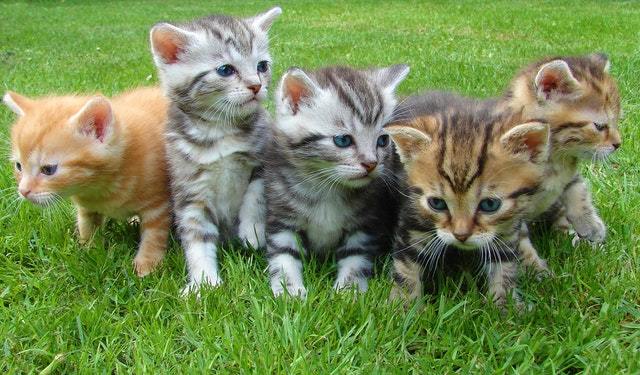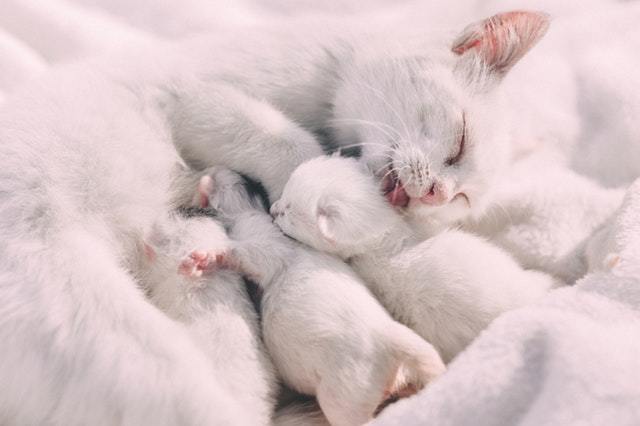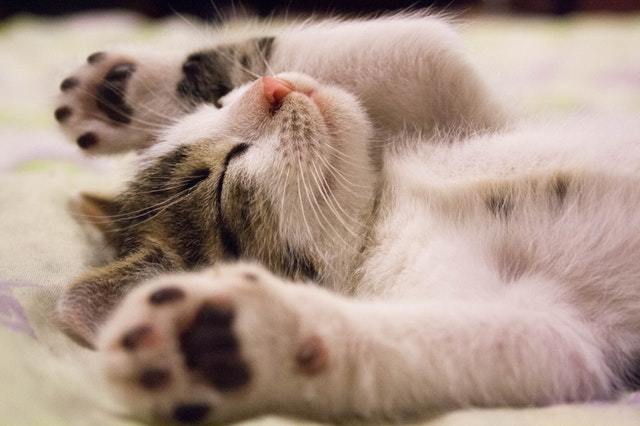
Kittens are fun and awesome furry little creatures. They are full of energy one second and then completely zonked out the next. To say the least they have a lot of interesting things going on in their lives before they become a full grown feline. As you probably know, kittens don’t stay kittens for too long, only about a year or so. But there are a lot of interesting kitten facts out there for that short period of time your cat remains a kitten. Take a look below to read up on some of the most interesting kitten facts.
Interesting Kitten Facts In No Particular Order
- Kittens can be spayed or neutered when they are only eight weeks old. Some shelters and rescues will do this even sooner if the cat is over a specific weight, often about 2 pounds. These procedures should be performed before your cat hits the age of 4 months.
- A female kitten can become pregnant at the age of 4 months meaning she’d have her first litter of kittens somewhere around the six month mark.
- A group of kittens is called a “kindle.”
- Kittens in the same litter can have more than one father. This is because the female cat releases multiple eggs over the course of a few days when she is in heat and she might mate with multiple fathers in that same time period.
- Kittens under the age 3 months old have no response to catnip at all.
- People often think that they’ve stumbled over a purebred stray kitten, but this is very uncommon. Many standard domestic shorthair cats look very similar to the color patterns of purebred cats so they are easily mistaken for each other. In fact my cat Beast looks quite similar to a Russian Blue but she’s just a standard grey American domestic shorthair.
- There are usually somewhere between 2 and 5 kittens in a litter depending on the breed and size of the mother.
- The record for the largest number of kittens in a single litter was 19. This record was set in 1970 in Yorkshire, England. Unfortunately 4 of the kittens were stillborn.
- Over her lifetime a cat called Dusty had 420 kittens.
- The oldest cat recorded giving birth to kittens was named Kitty, she was 30 years old. This happened in 1987!
- Kittens sleep even more often than their adult counterparts (adults sleep about 16 hours a day). This is largely assumed to be because they release growth hormones while sleeping to help them grow up quickly.
- Kittens only get 26 teeth in their first set of teeth, but by the time they are 7 to 8 months old they’ll have a whole new set that will last their whole life! The final set has 30 teeth.
- Play fighting among kittens is a way for them to practice and learn skills for hunting and fighting. It also keeps them in great shape and helps keep them from getting overweight.
- Raising two kittens together is highly recommended as they will entertain one another when you aren’t available ensuring they get into less mischief.
- If you don’t socialize (play with, handle, pet, etc.) a kitten between the ages of 3 and 7 weeks it is unlikely the cat will ever be interested in human affection. This is why feral cats typically aren’t kept as potential cats for adoption if they are trapped.
- Newborn kittens are unable to regulate their own body temperature the first 3 weeks they are alive, this means it is absolutely essential that they stay near their mother to stay healthy!
- Kittens don’t open their eyes for the first time until about seven to ten days after birth. Their eyesight will not mature into that of an adult cat until they are almost 10 weeks old!

- A mother cat’s milk contains important antibodies which help little kittens to develop and boost their immune systems, while also protecting them against infection.
- If a mother cat is FIV+ it is possible for the kittens to test positive due to inheriting the antibodies from the mother. These antibodies will often clear the system by the age of about 6 months resulting in an accurate testing showing the kitten is FIV-.
- The word “kitten” is from the late 14th century, appearing in Middle English as kitoun, ketoun and kyton . Linguists believe that the word actually comes from the Old French chitoun or cheton, meaning little cat. In England, from 1870 onwards “kitten” was a playful term for a young sweetheart, which might be where terms like “sex kitten” come from today!
- This is probably one of my favorite interesting kitten facts! Kittens learn from a young age to purr when they are happy and relaxed. Kittens purr using their laryngeal and diaphragmatic muscles. They can purr while breathing in or out and do so at about 25-140 Hertz. Scientists have discovered that sounds produced at this frequency can improve bone density and promote healing! While most mammals move around a lot during the day which exercises muscles and helps maintain bone health, cats in general (especially young kittens) spend a lot of their time asleep. Scientists suspect that that cats might have developed the ability to purr to use the minimum amount of energy possible but still maintain great bodily health. Check out this amazing infographic from Daily Infographic for more details.
- Research indicates a human raising a kitten can impact personality later in its life. This is most common when a mother abandons kittens or dies from birthing them. Hand raised kittens are known as being very affectionate with humans, but there are drawbacks as well. Kittens brought up by humans are likely to have much larger mood swings.
 All kittens are born with blue eyes, even if we can’t see them until about the 10 day mark. This because the brown pigment melanin has not yet been deposited in the irises of the eye, or darkened by exposure to ultraviolet light. There is a common myth that all humans are born with blue eyes, but this is simply not true.
All kittens are born with blue eyes, even if we can’t see them until about the 10 day mark. This because the brown pigment melanin has not yet been deposited in the irises of the eye, or darkened by exposure to ultraviolet light. There is a common myth that all humans are born with blue eyes, but this is simply not true.- Kitten noses are the equivalent of a human fingerprint, and no two noses are ever quite the same.
- Kittens, like us humans, have a stronger more dominant paw. Research shows that the difference is typically based on gender. Female kittens are usually right-pawed while their male siblings tend to be left-pawed. You’ll definitely notice this if you play with your cat often. Who knows when they’ll start releasing right and left pawed cat toys!?
Hopefully you found these facts just as interesting as I did. I had a lot of fun researching them and learned a lot about kittens that I never knew in the past. If you have any interesting kitten facts you’d like to add please leave a comment below or send me an email at Craig@StuffCatsWant.com so I can get it added to the page!
StuffCatsWant.com is a participant in the Amazon Services LLC Associates Program, an affiliate advertising program designed to provide a means for sites to earn advertising fees by advertising and linking to Amazon.com.

